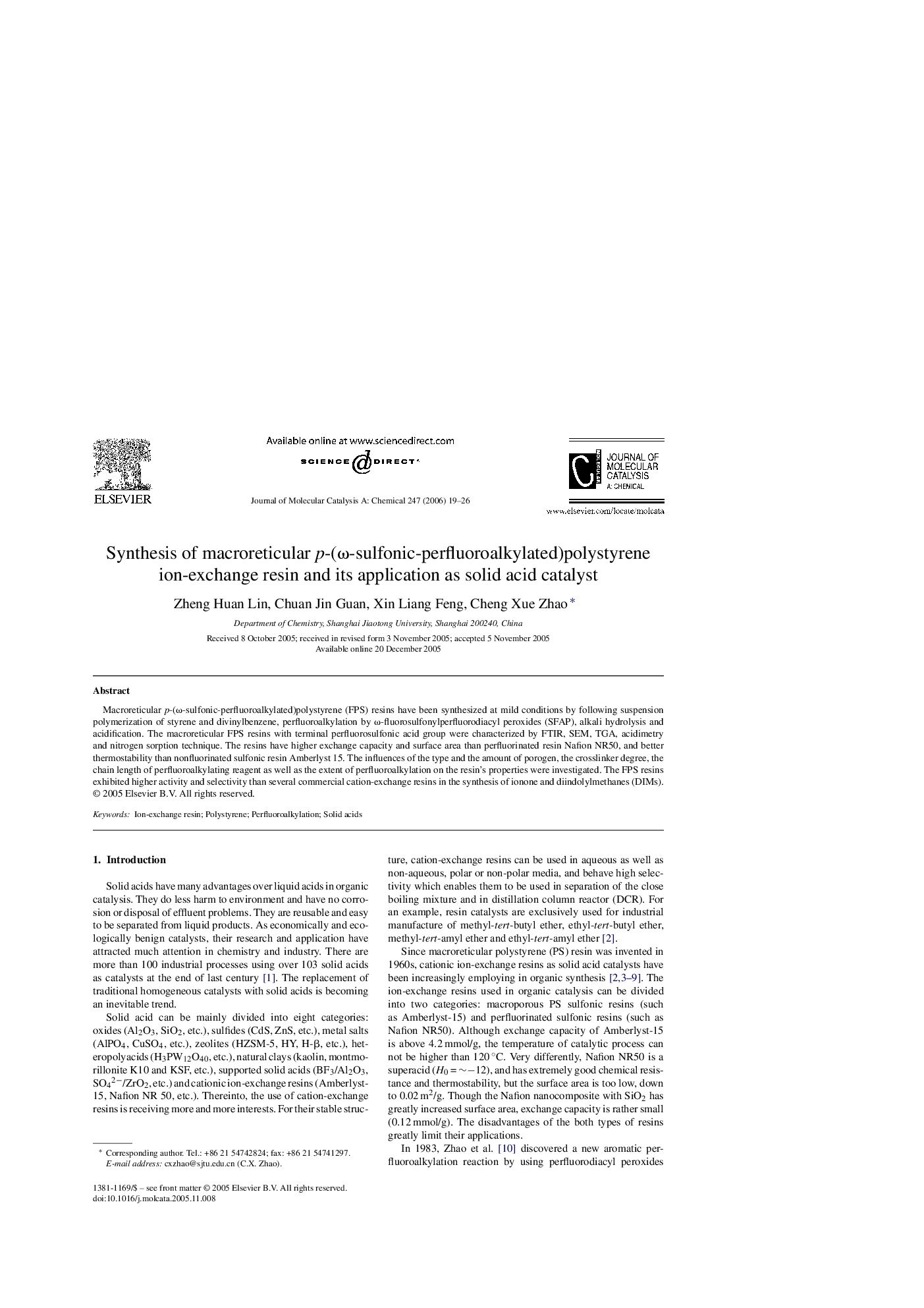| Article ID | Journal | Published Year | Pages | File Type |
|---|---|---|---|---|
| 69253 | Journal of Molecular Catalysis A: Chemical | 2006 | 8 Pages |
Macroreticular p-(ω-sulfonic-perfluoroalkylated)polystyrene (FPS) resins have been synthesized at mild conditions by following suspension polymerization of styrene and divinylbenzene, perfluoroalkylation by ω-fluorosulfonylperfluorodiacyl peroxides (SFAP), alkali hydrolysis and acidification. The macroreticular FPS resins with terminal perfluorosulfonic acid group were characterized by FTIR, SEM, TGA, acidimetry and nitrogen sorption technique. The resins have higher exchange capacity and surface area than perfluorinated resin Nafion NR50, and better thermostability than nonfluorinated sulfonic resin Amberlyst 15. The influences of the type and the amount of porogen, the crosslinker degree, the chain length of perfluoroalkylating reagent as well as the extent of perfluoroalkylation on the resin's properties were investigated. The FPS resins exhibited higher activity and selectivity than several commercial cation-exchange resins in the synthesis of ionone and diindolylmethanes (DIMs).
Graphical abstractMacroreticular p-(ω-sulfonic-perfluoroalkylated)polystyrene (FPS) resins have been synthesized at mild conditions by following suspension polymerization of styrene and divinylbenzene, perfluoroalkylation by ω-fluorosulfonylperfluorodiacyl peroxides (SFAP), alkali hydrolysis and acidification. The FPS resins with terminal perfluorosulfonic acid group exhibited higher activity and selectivity than several commercial cation-exchange resins in the synthesis of ionone and diindolylmethanes (DIMs). Figure optionsDownload full-size imageDownload as PowerPoint slide
